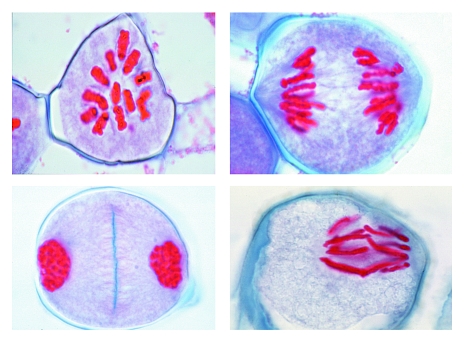Function and Applications
8500 Development of the Microspore Mother Cells - of Lilium candidum – 12 Microscope SlidesLeptotene, the chromosomes appear as fine threads - Zygotene, the homologous chromosomes associate in pairs. The chromosomes appear as strings of beads - Pachytene, complete pairing of the chromosomes - Diplotene, shortening of the chromosomes by contraction. Interchange of chromatin between the maternal and paternal chromosomes (crossing over) - Diakinesis, further contraction of the bivalents, the nuclear membrane disappears - Metaphase and anaphase of the first (heterotypic) division, showing spindle threads. Two haploid sets of chromosomes are separated - Telophase of the first and prophase of the second division - Metaphase and anaphase of the second (homeotypic) division, two mitotic figures are present - Pollen tetrads, four nuclei are formed after the second division, each bearing the haploid number of chromosomes. Formation of cell walls - Uninucleate microspores after separation of daughter cells - Mature two-nucleate pollen grains at the time of shedding. Each pollen grain possesses a tube cell and a generative cell - Mature pollen grains, w.m. to show structure of the cell walls
The microslides are supplied in a slide box.